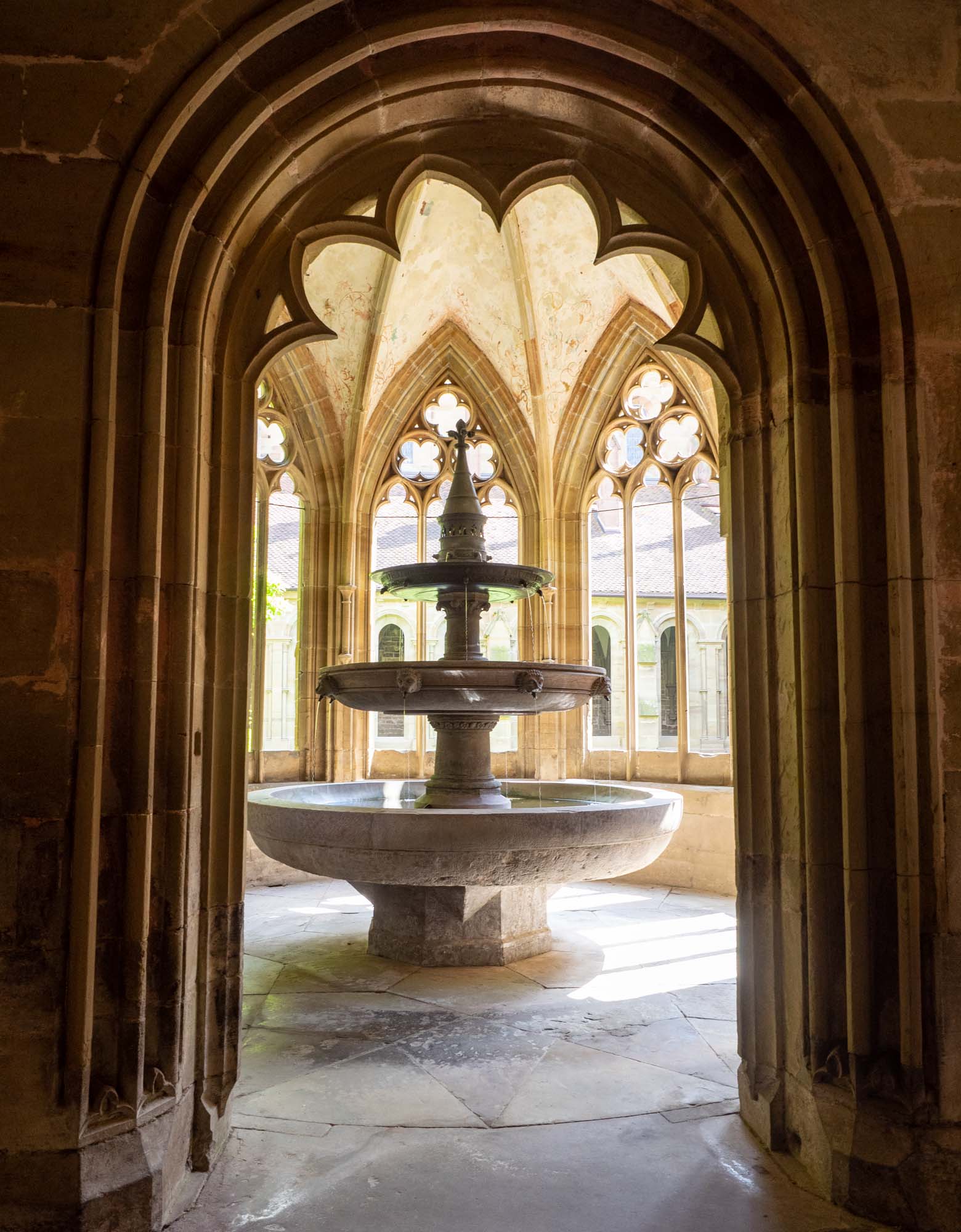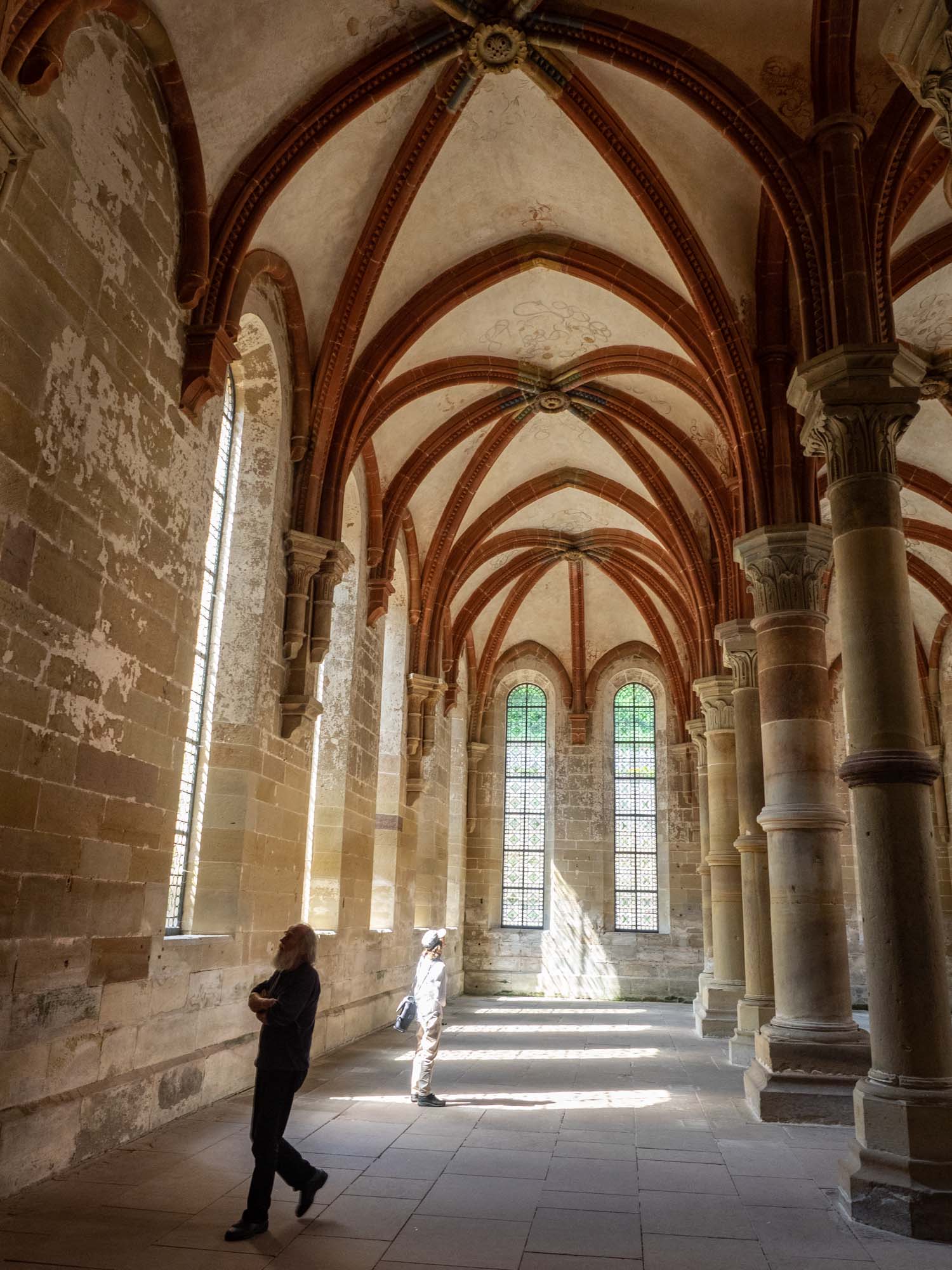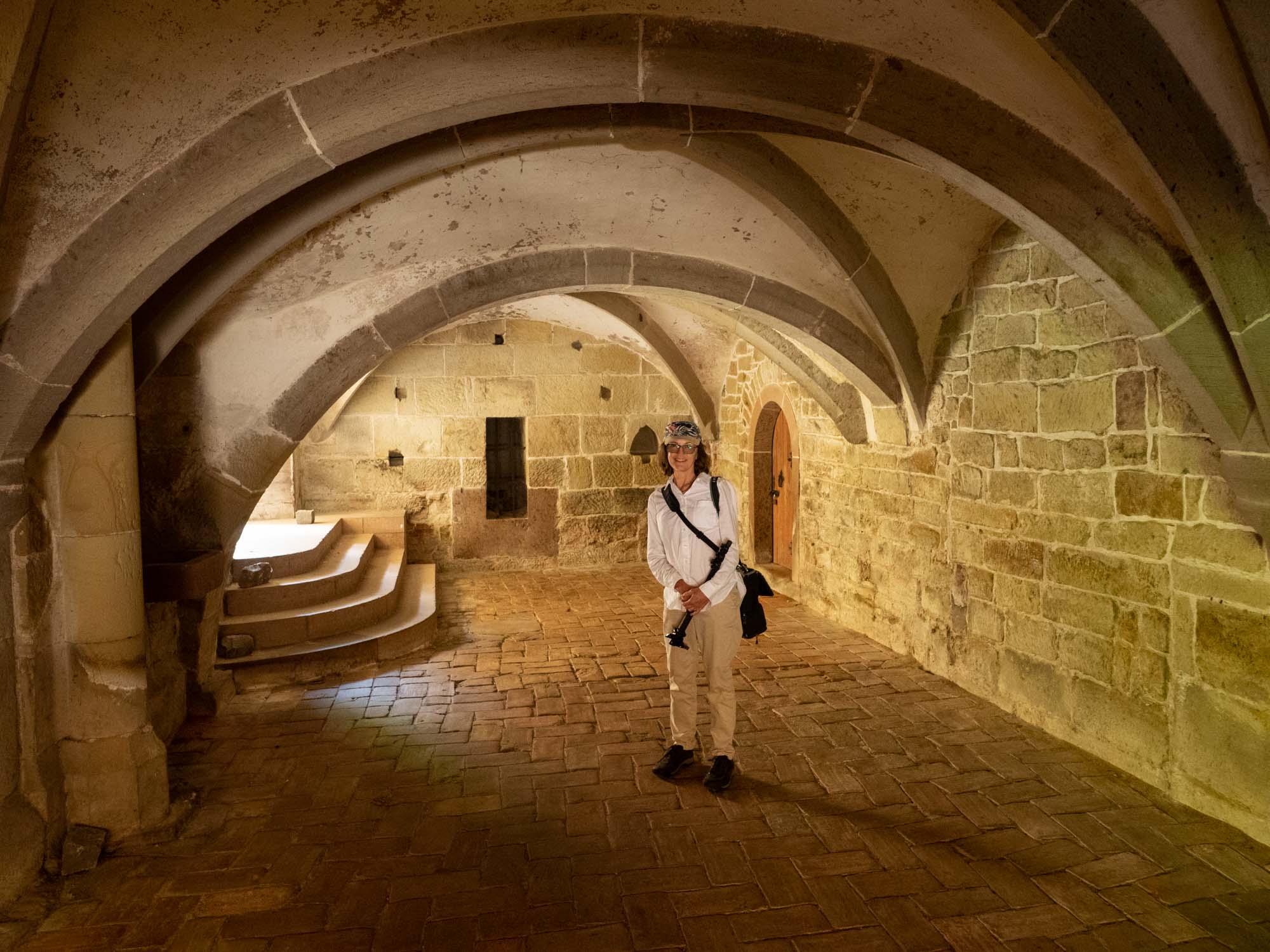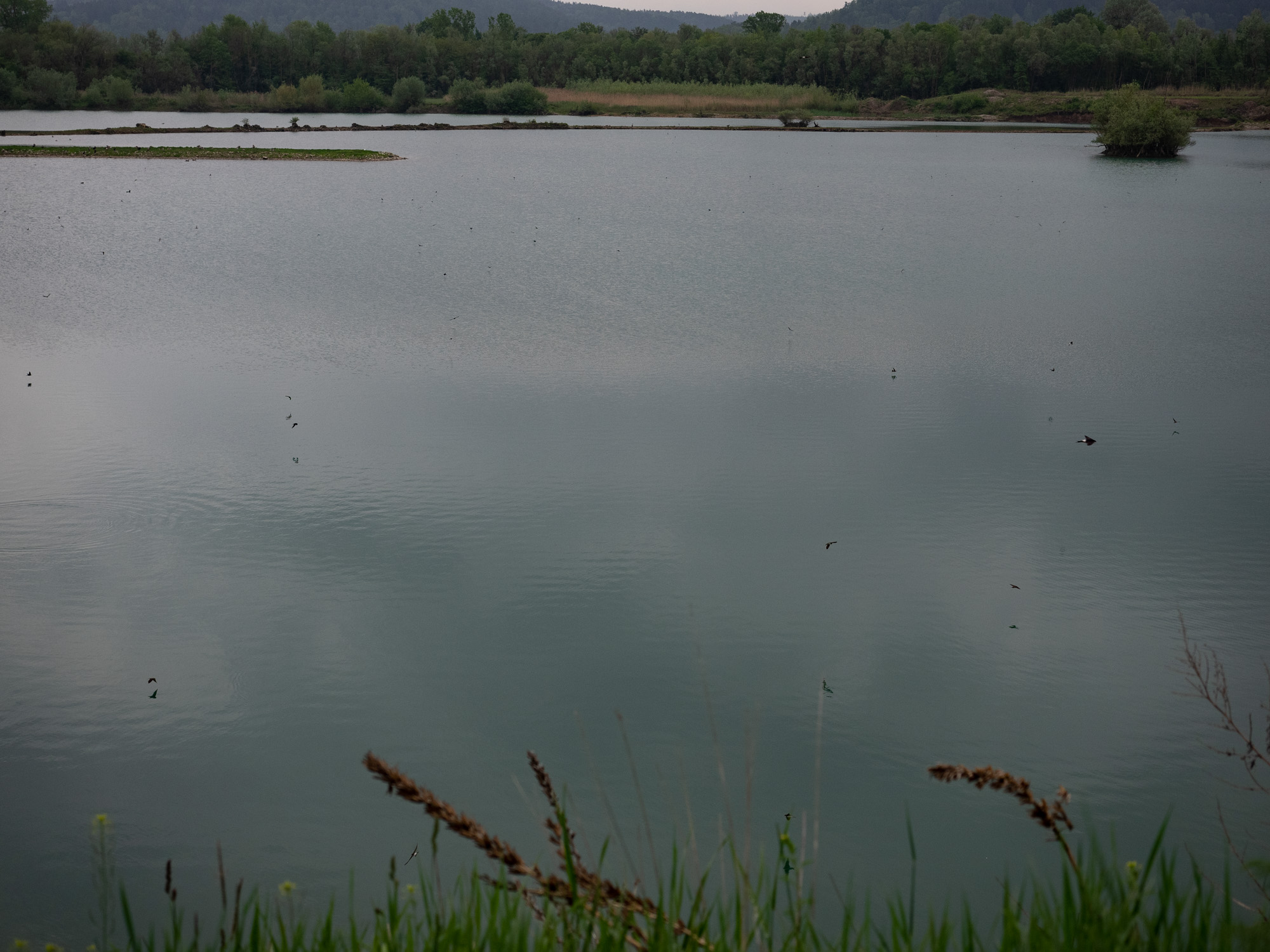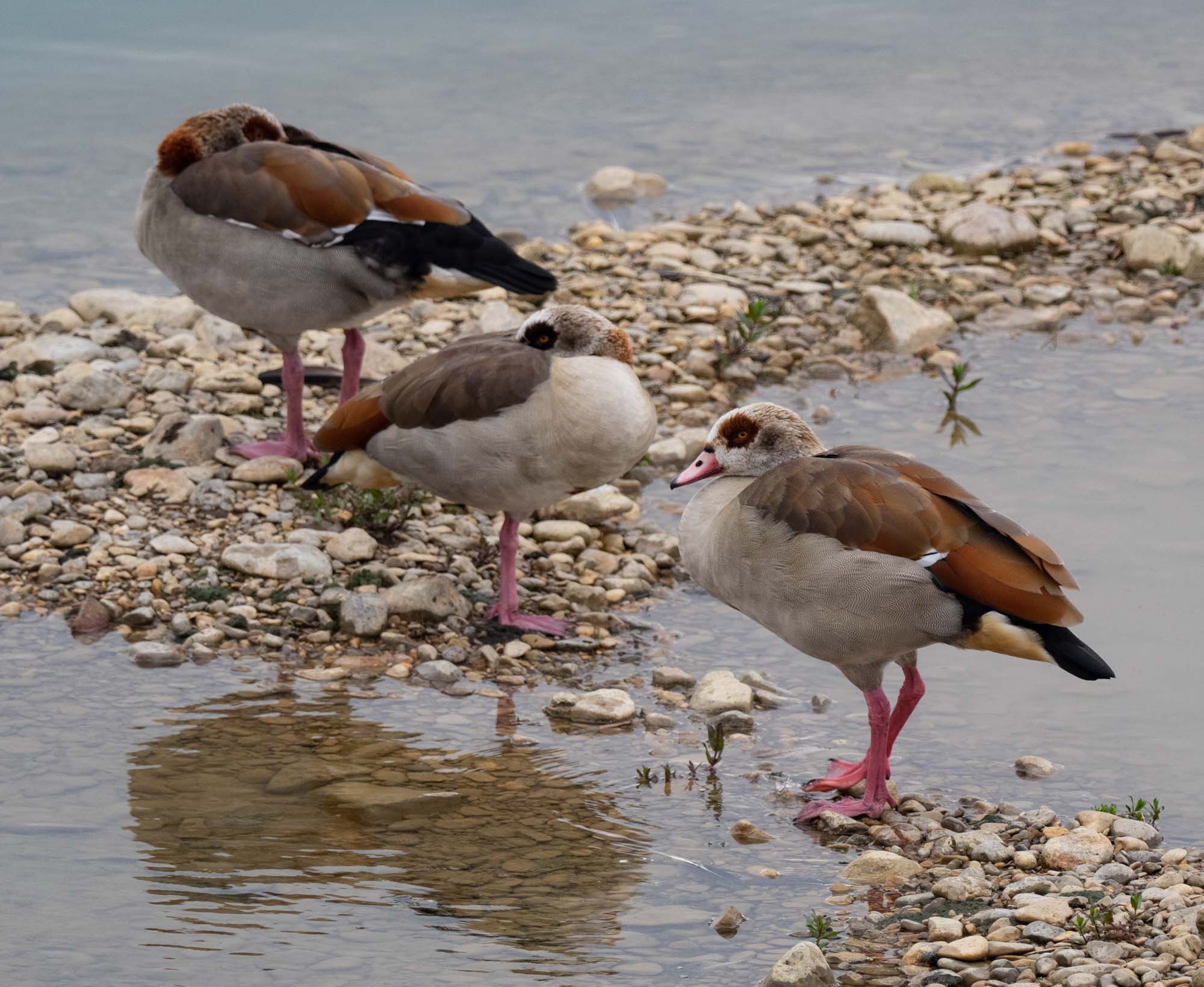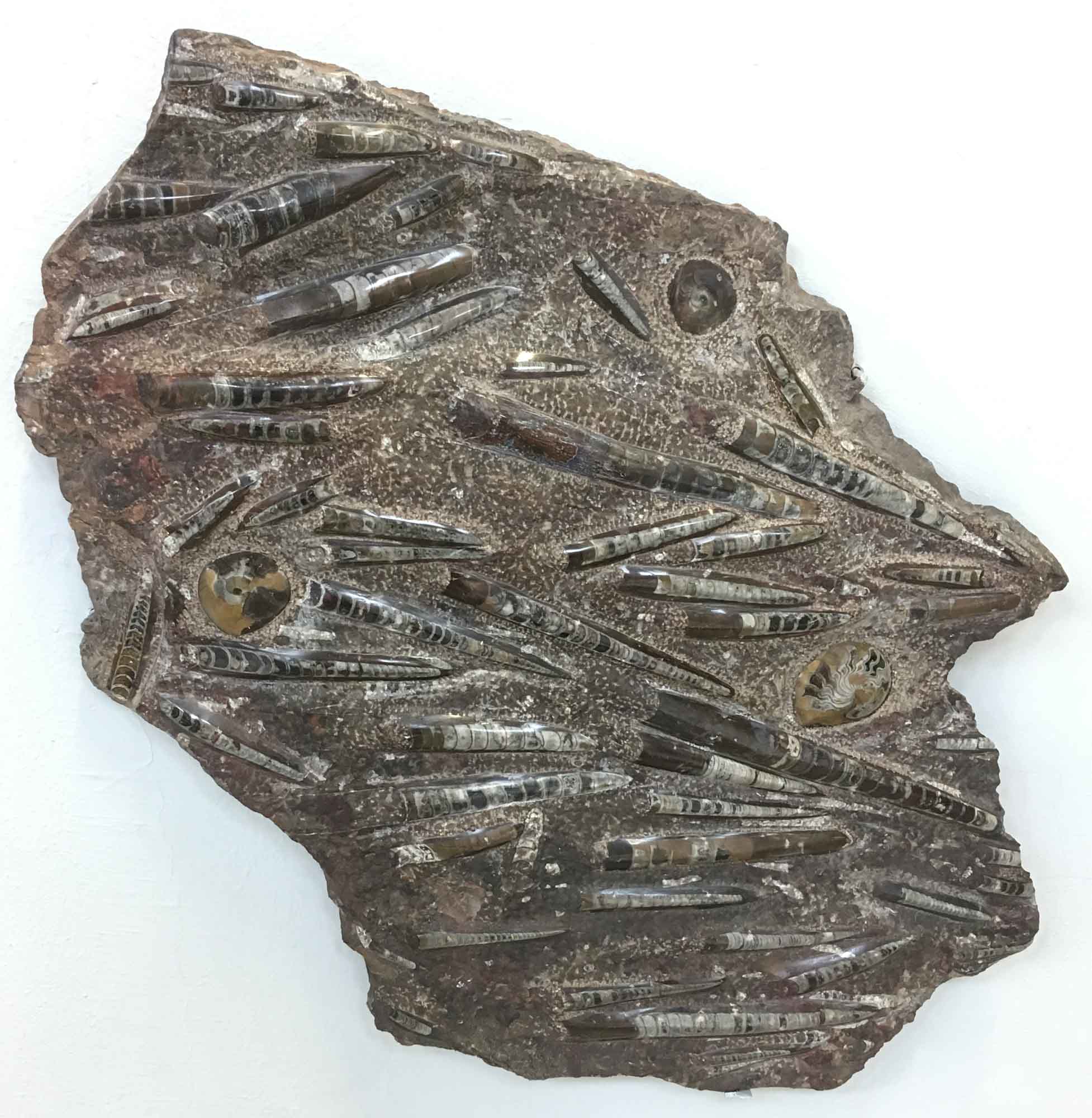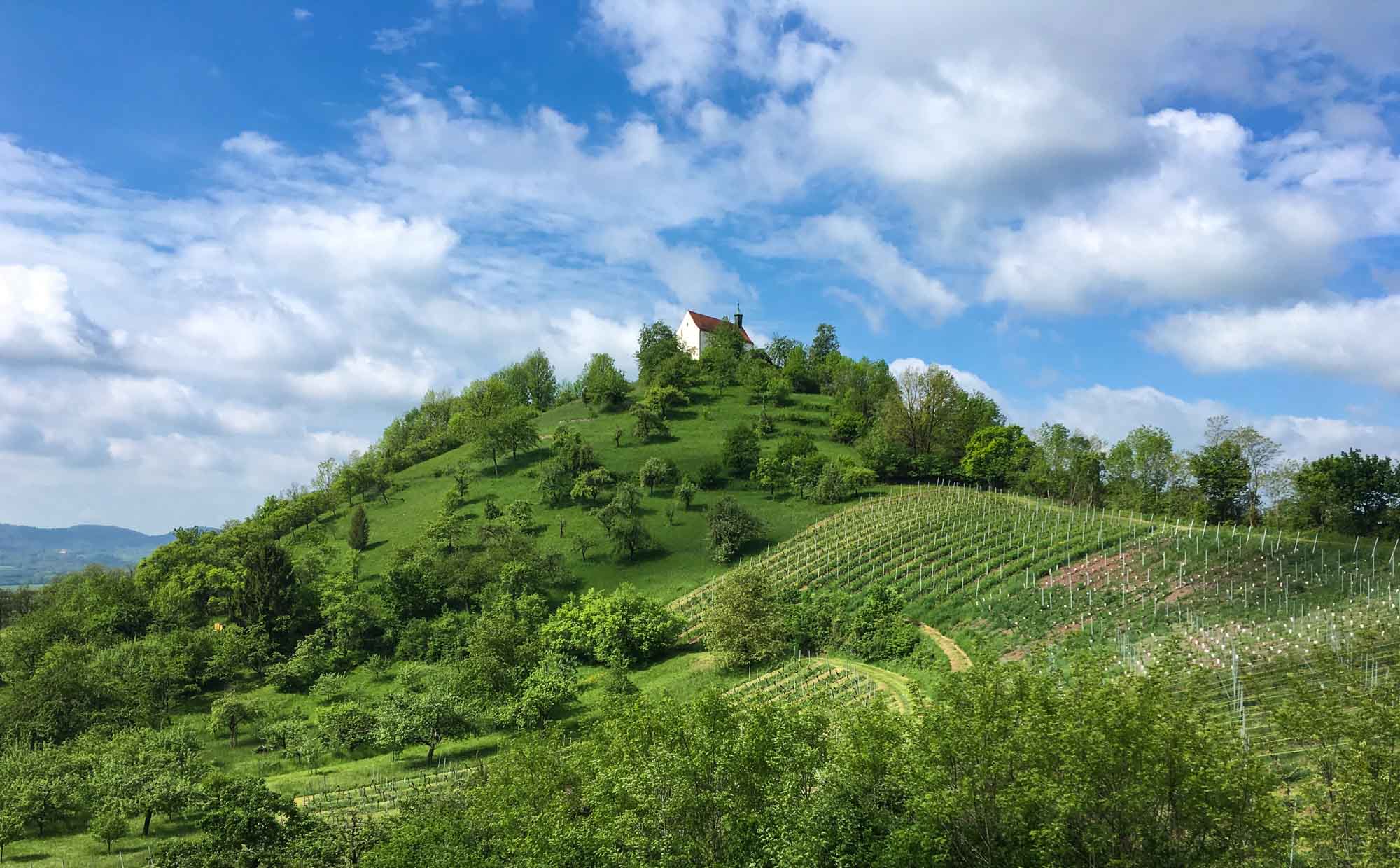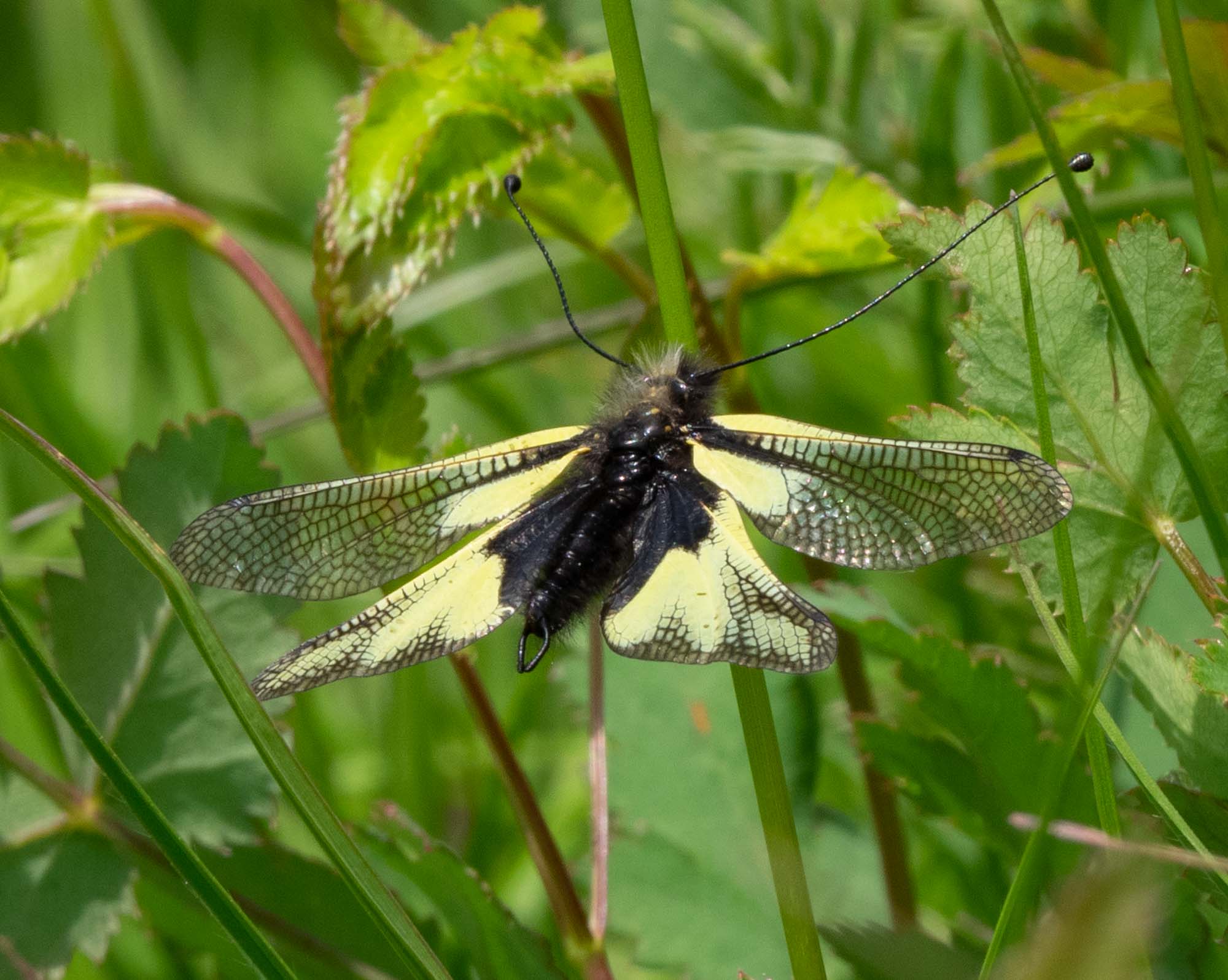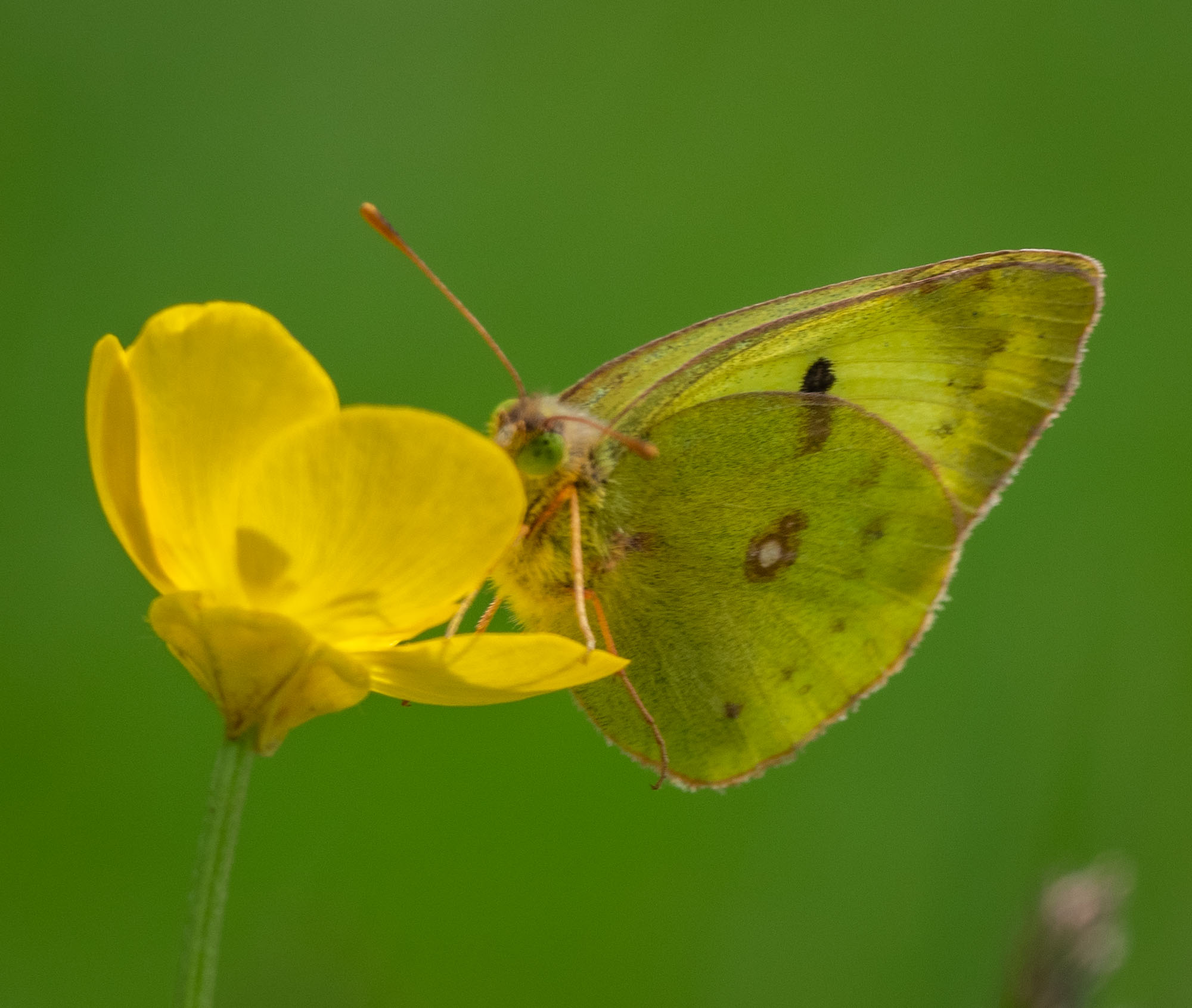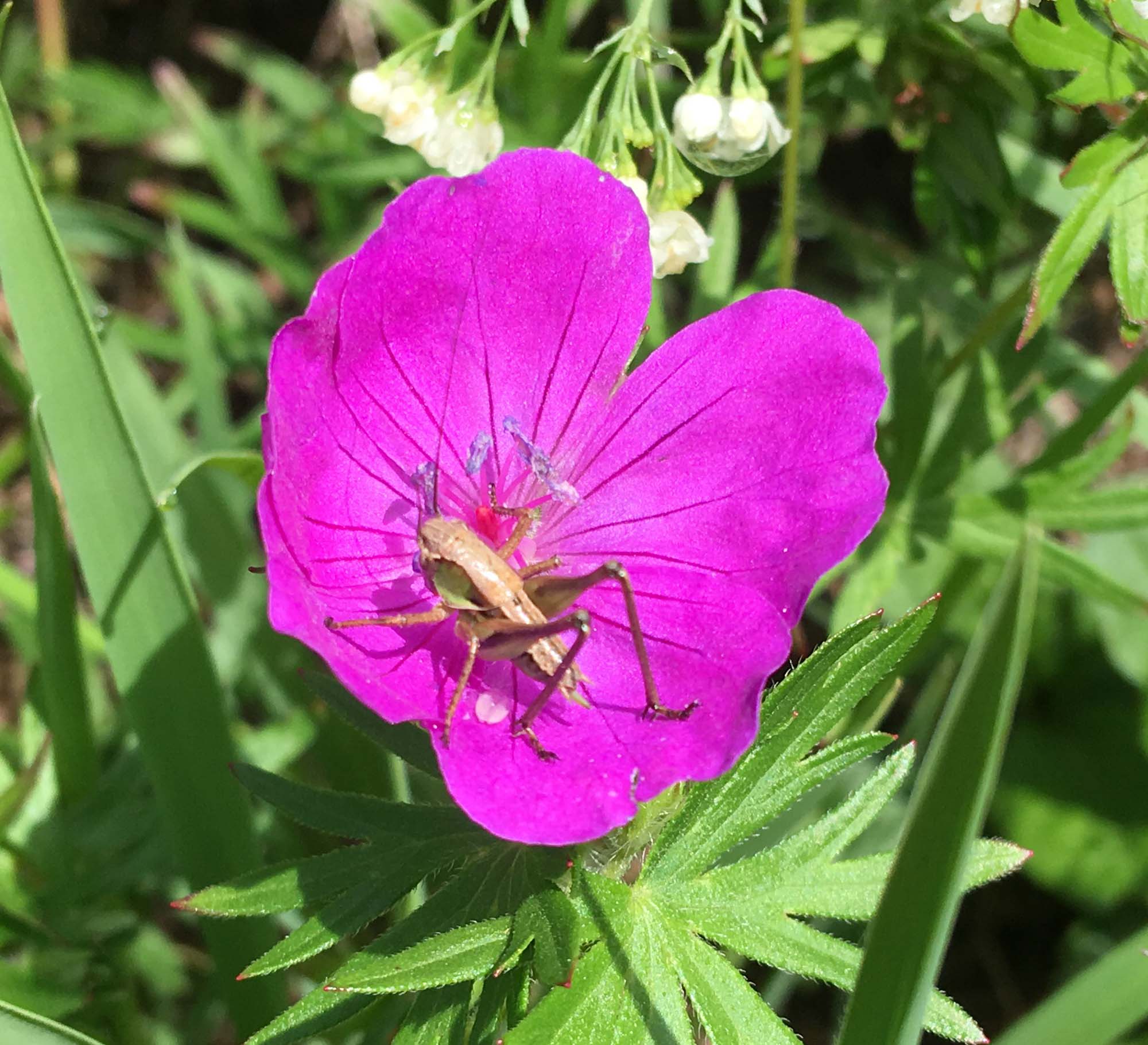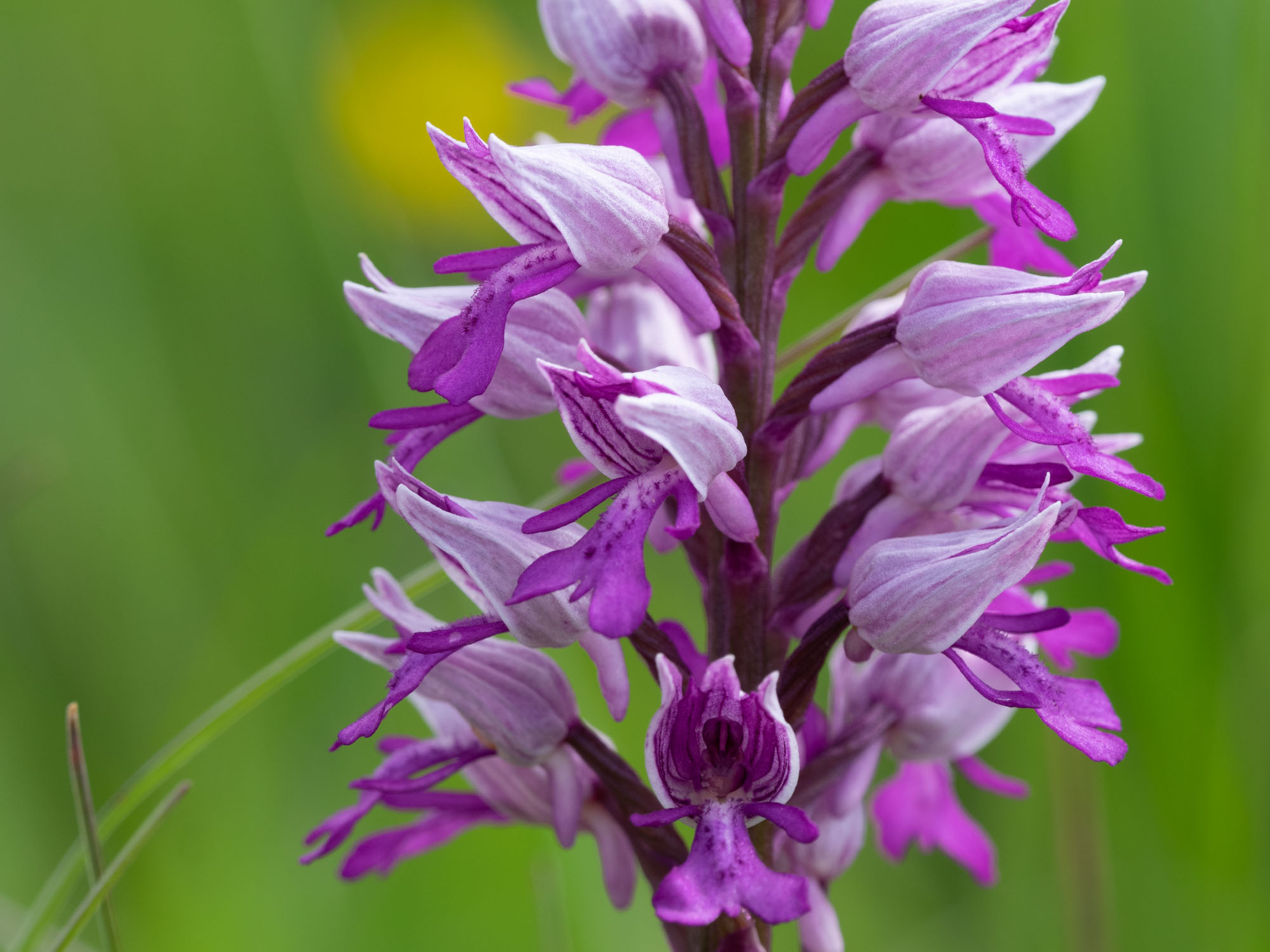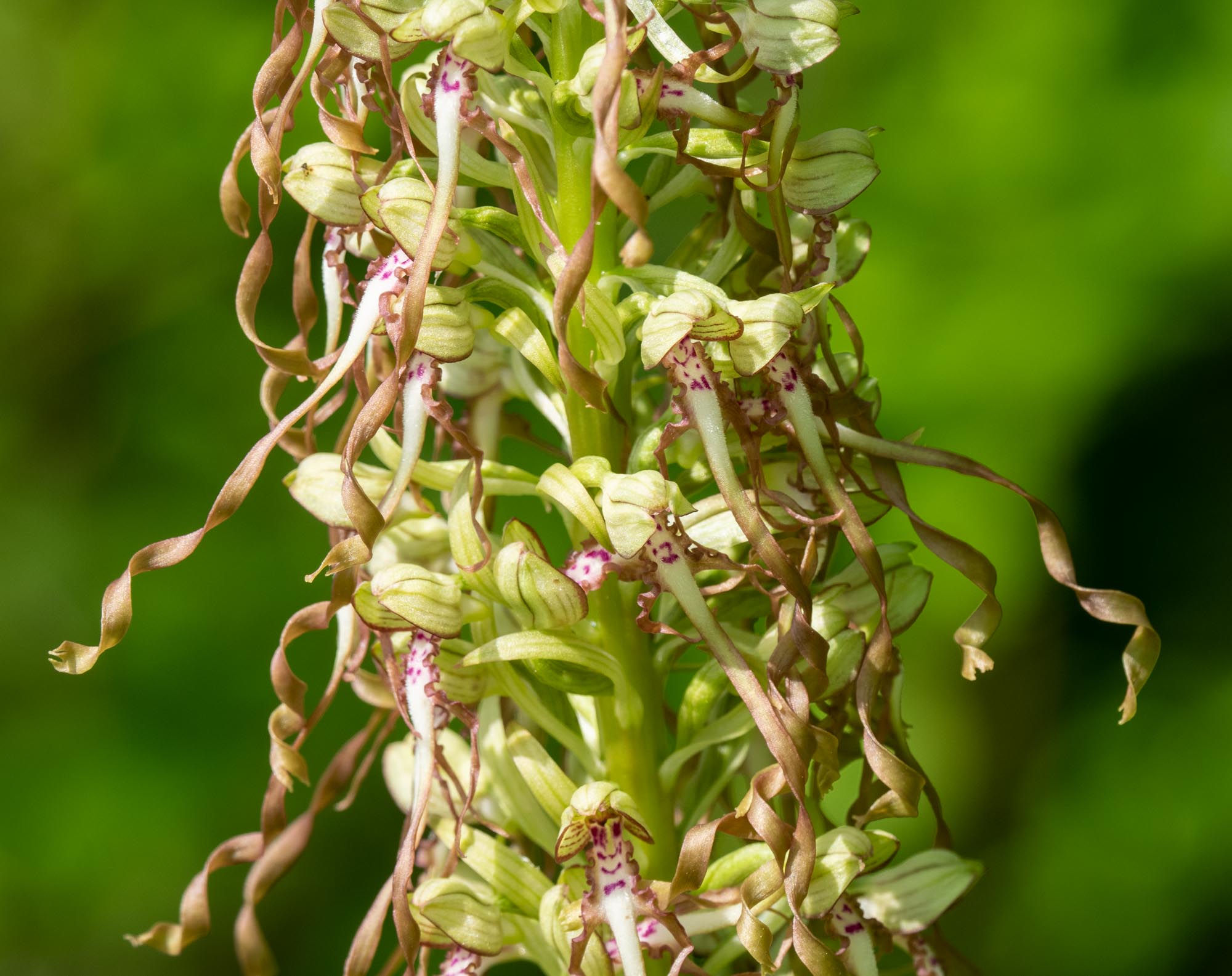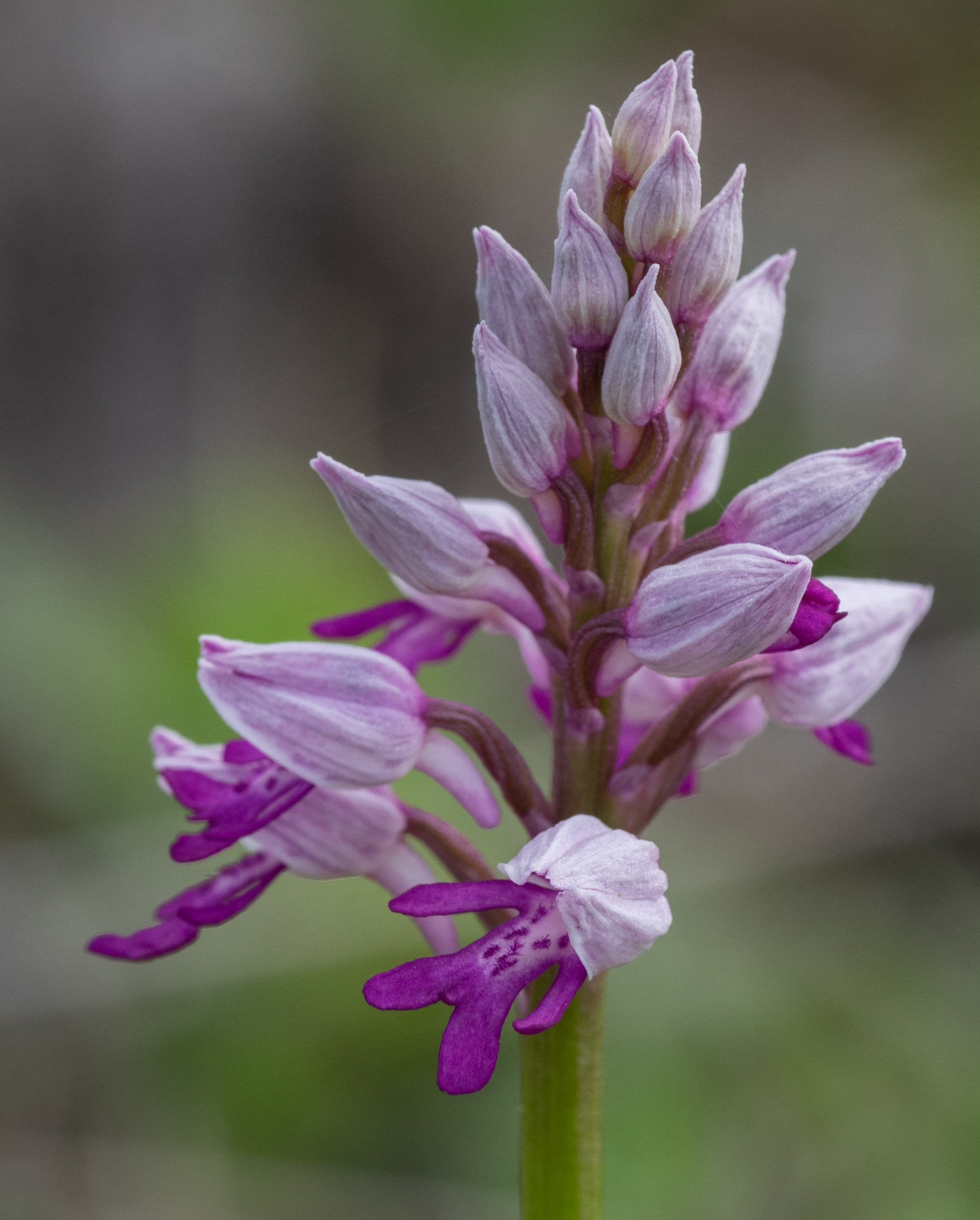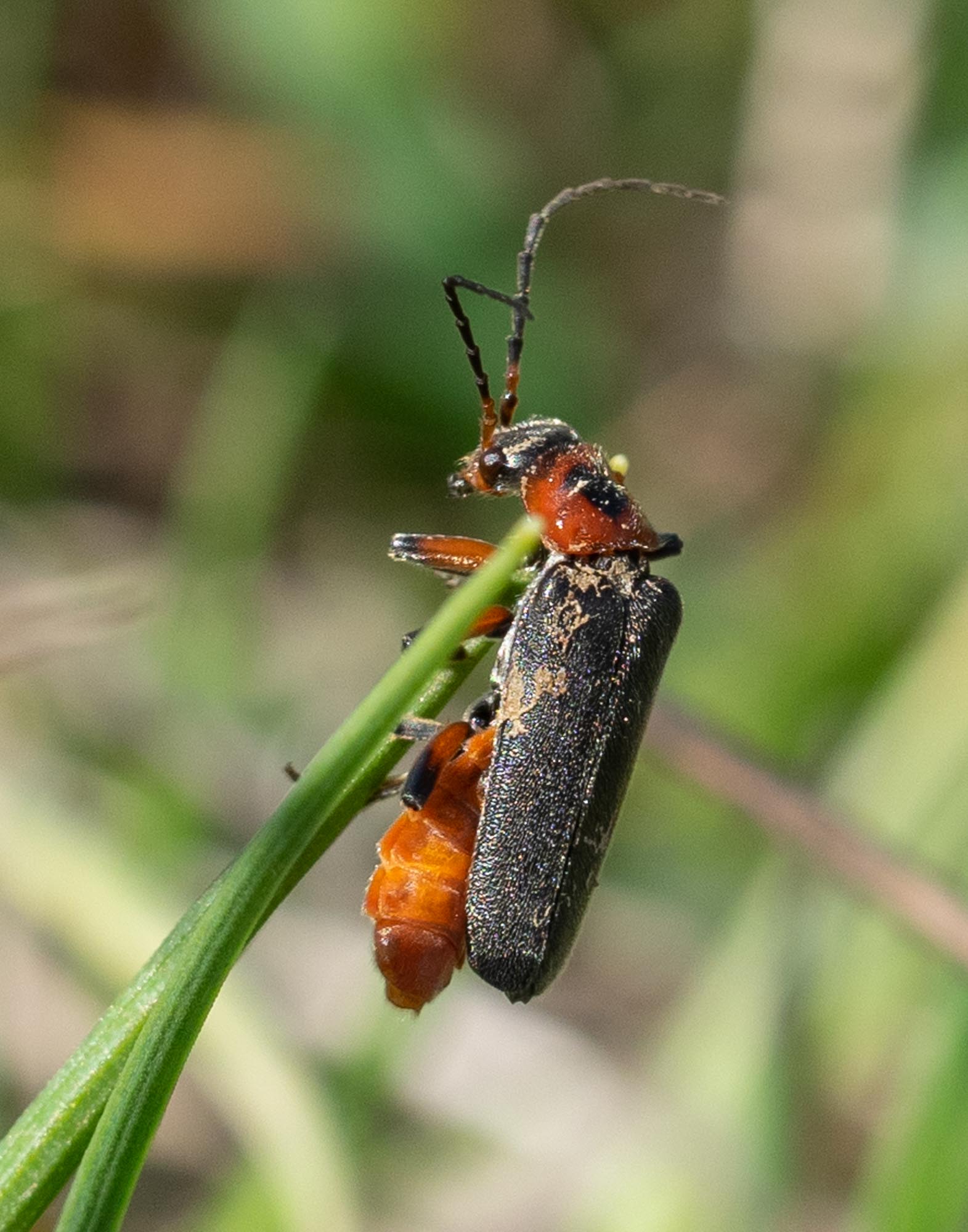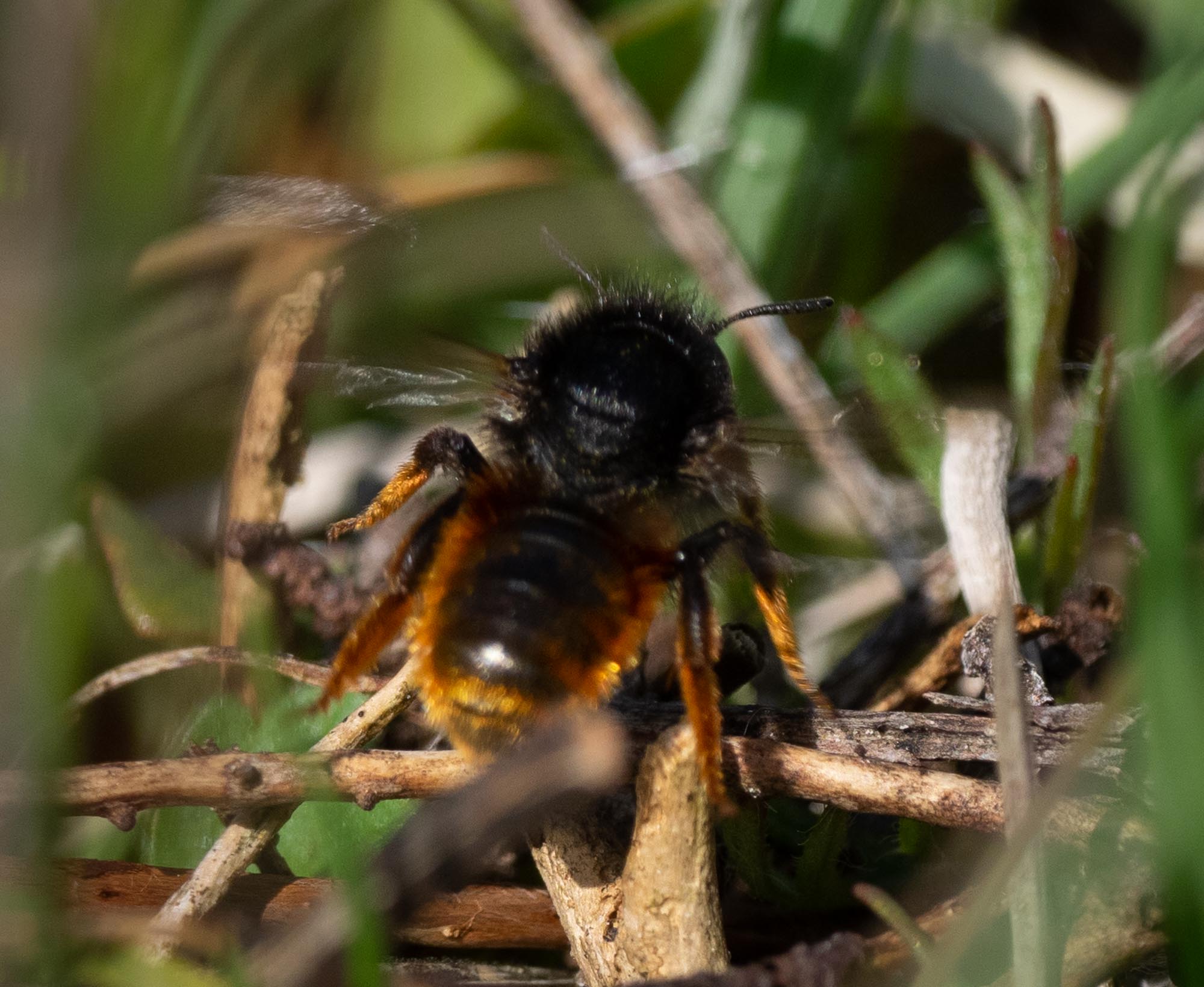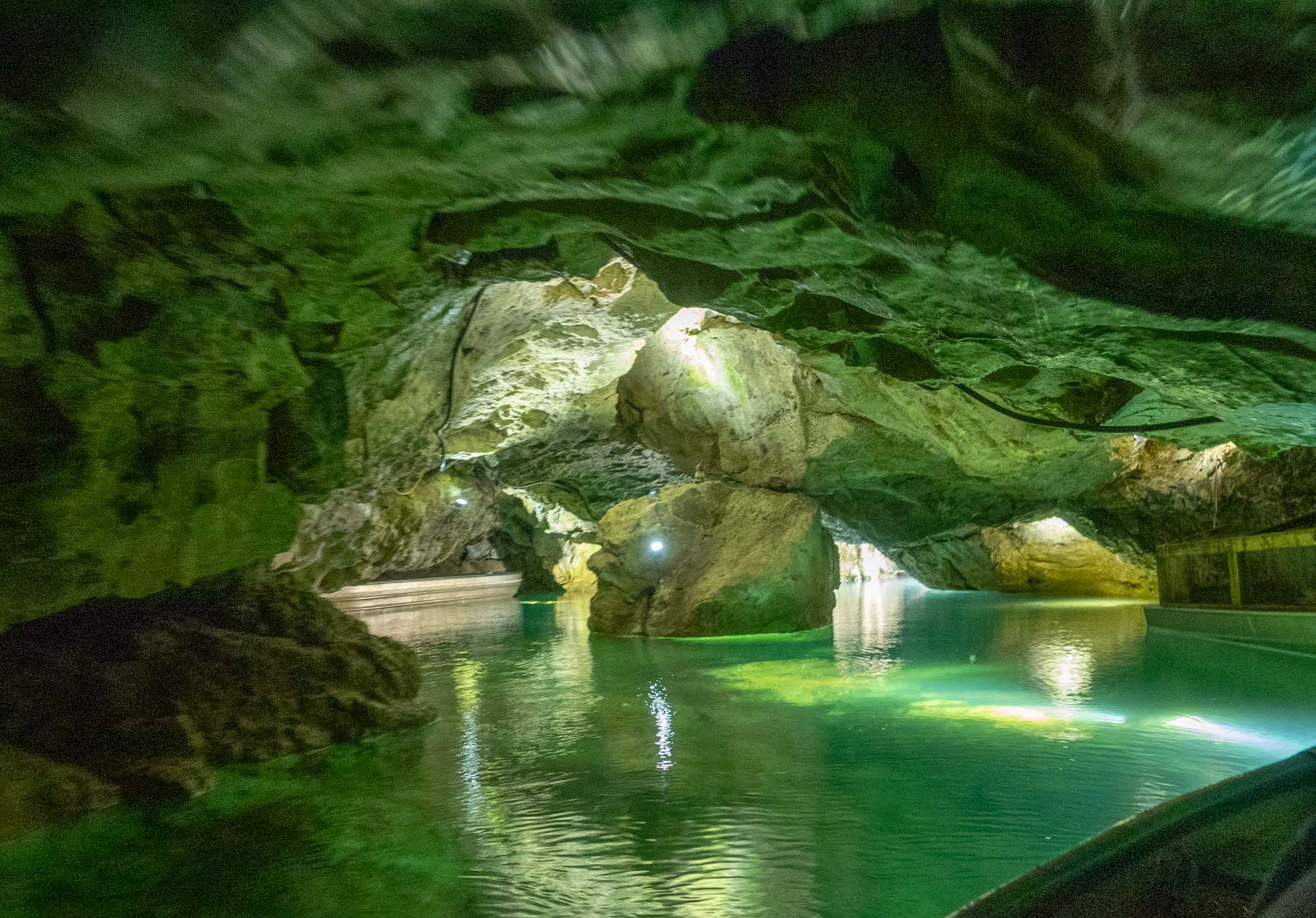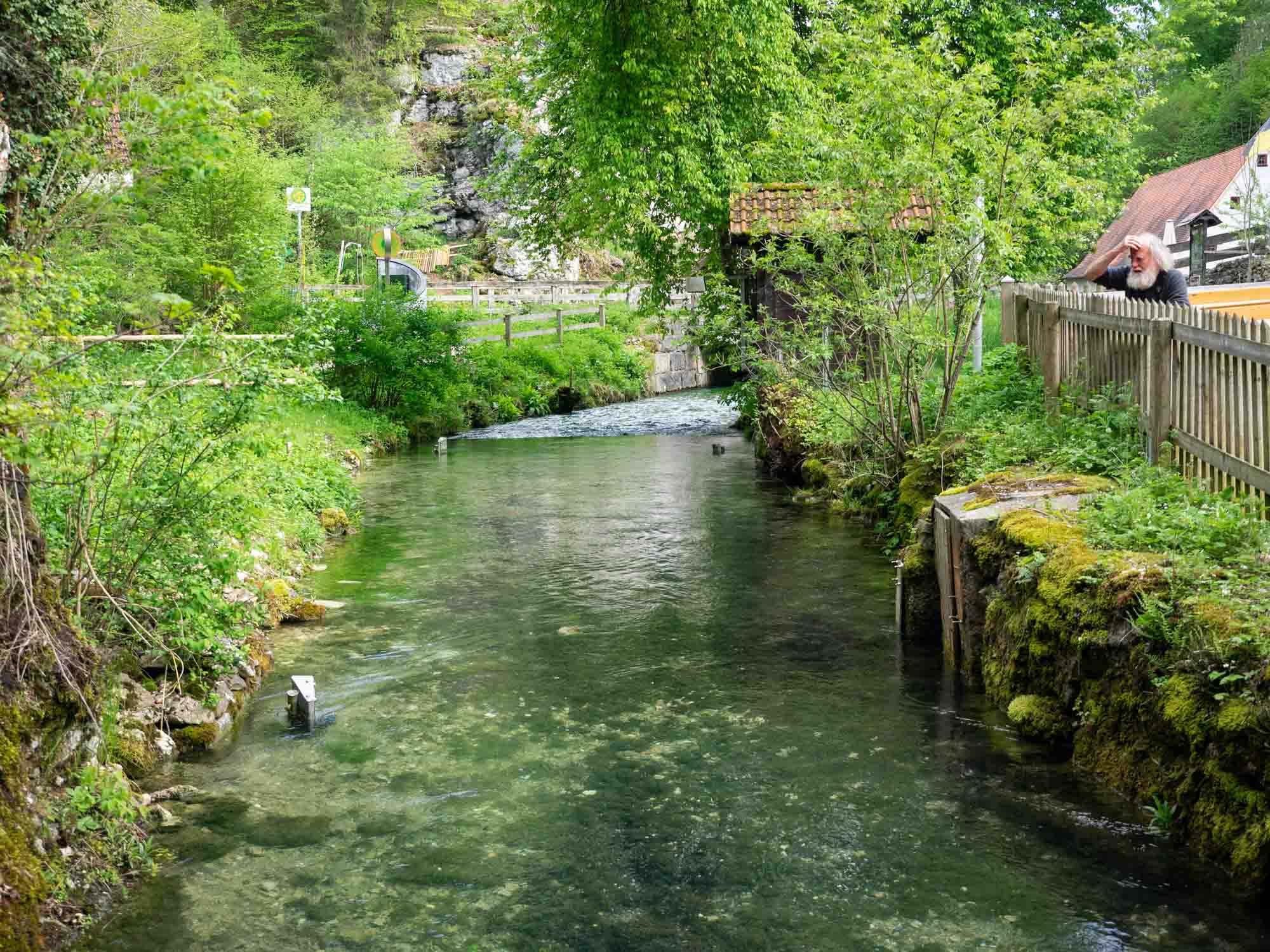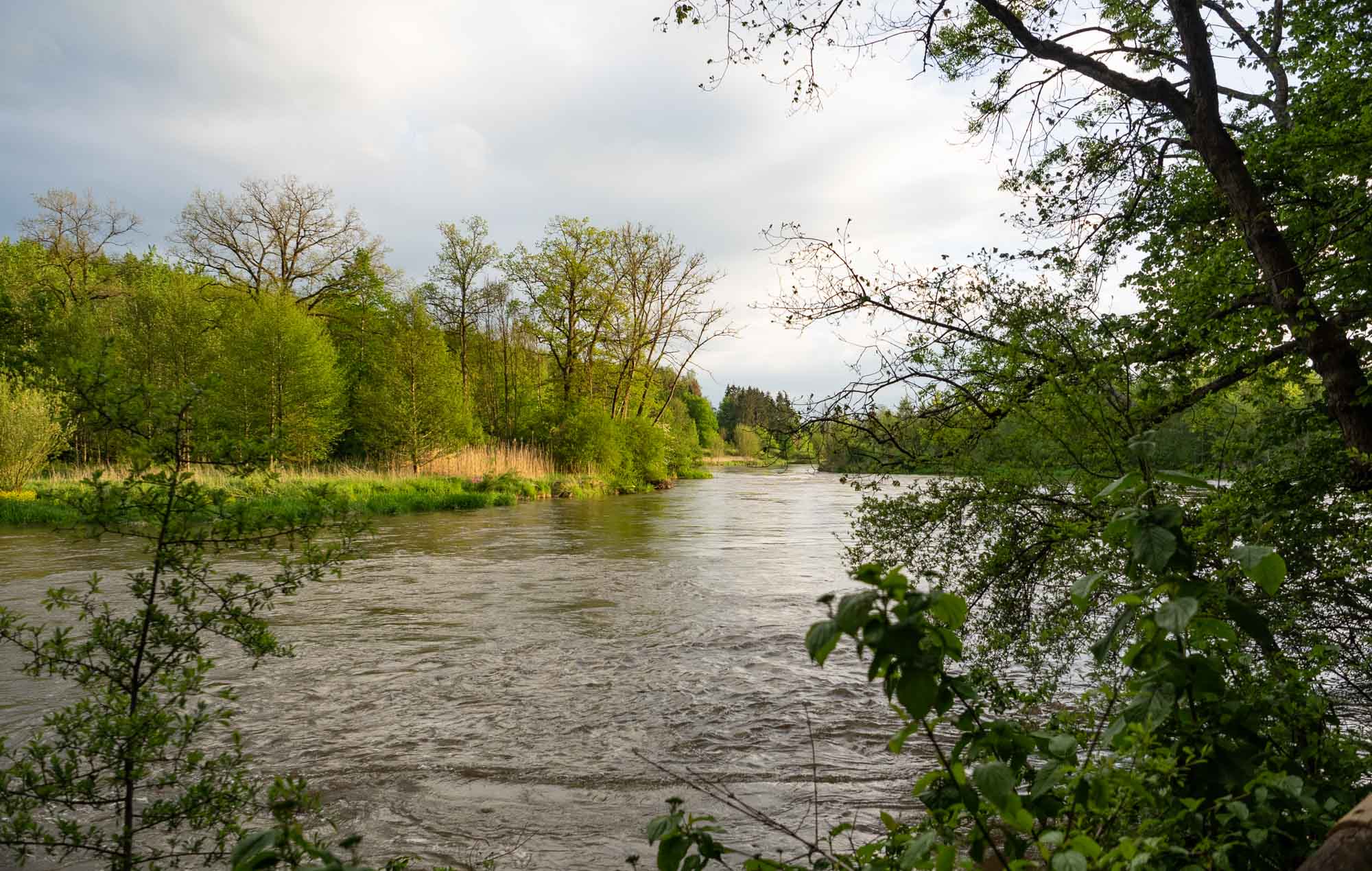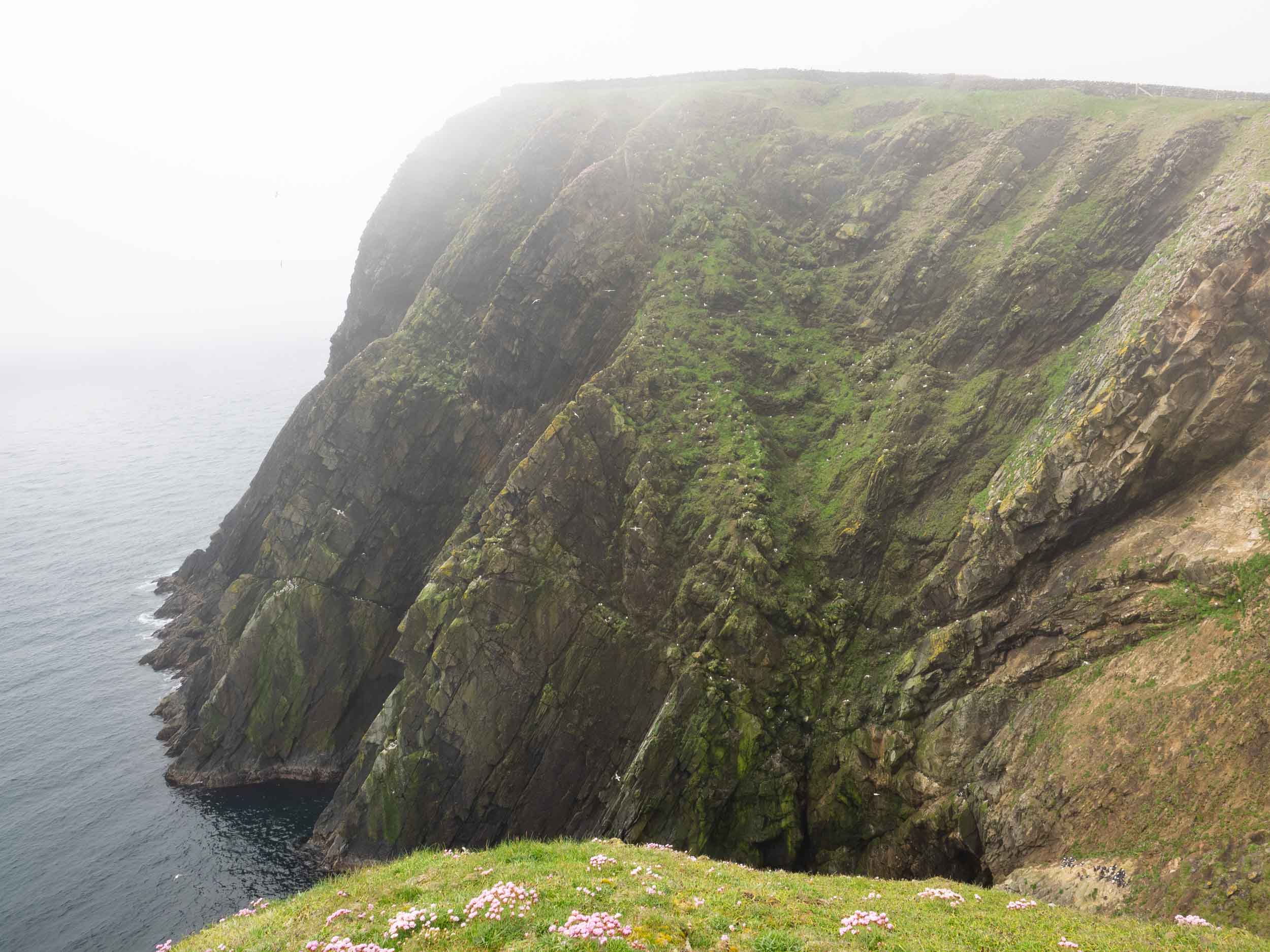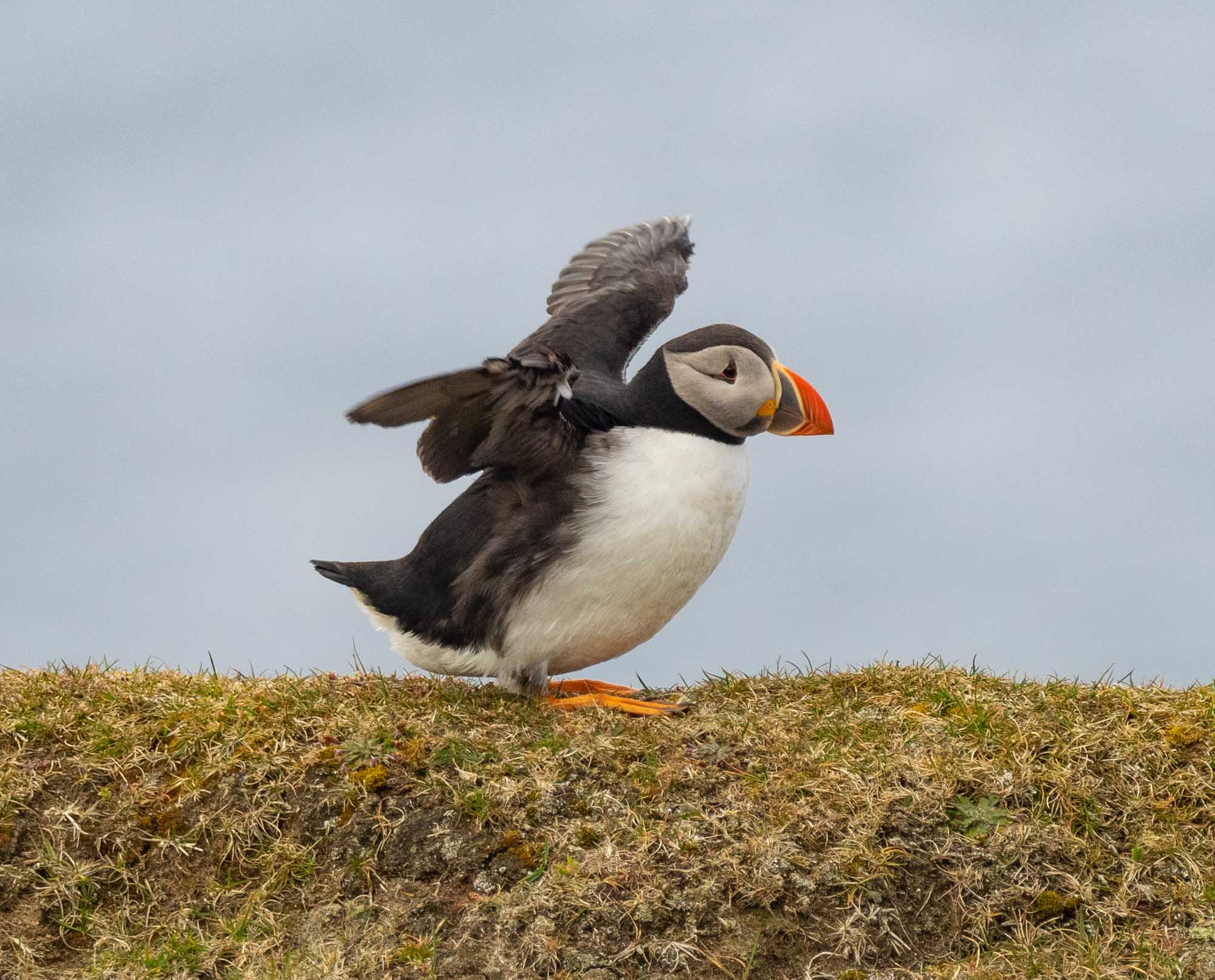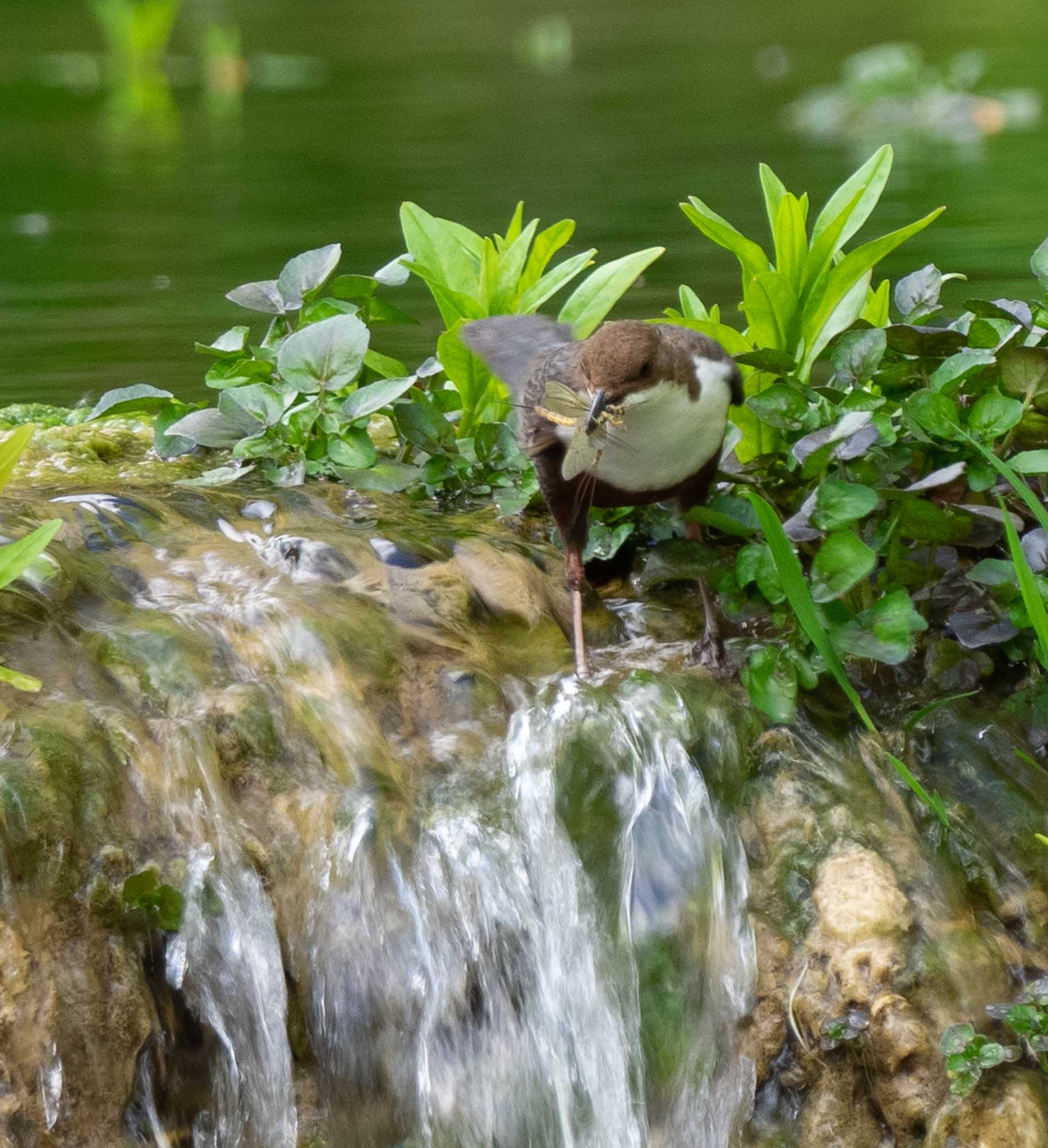A visit to Swabia
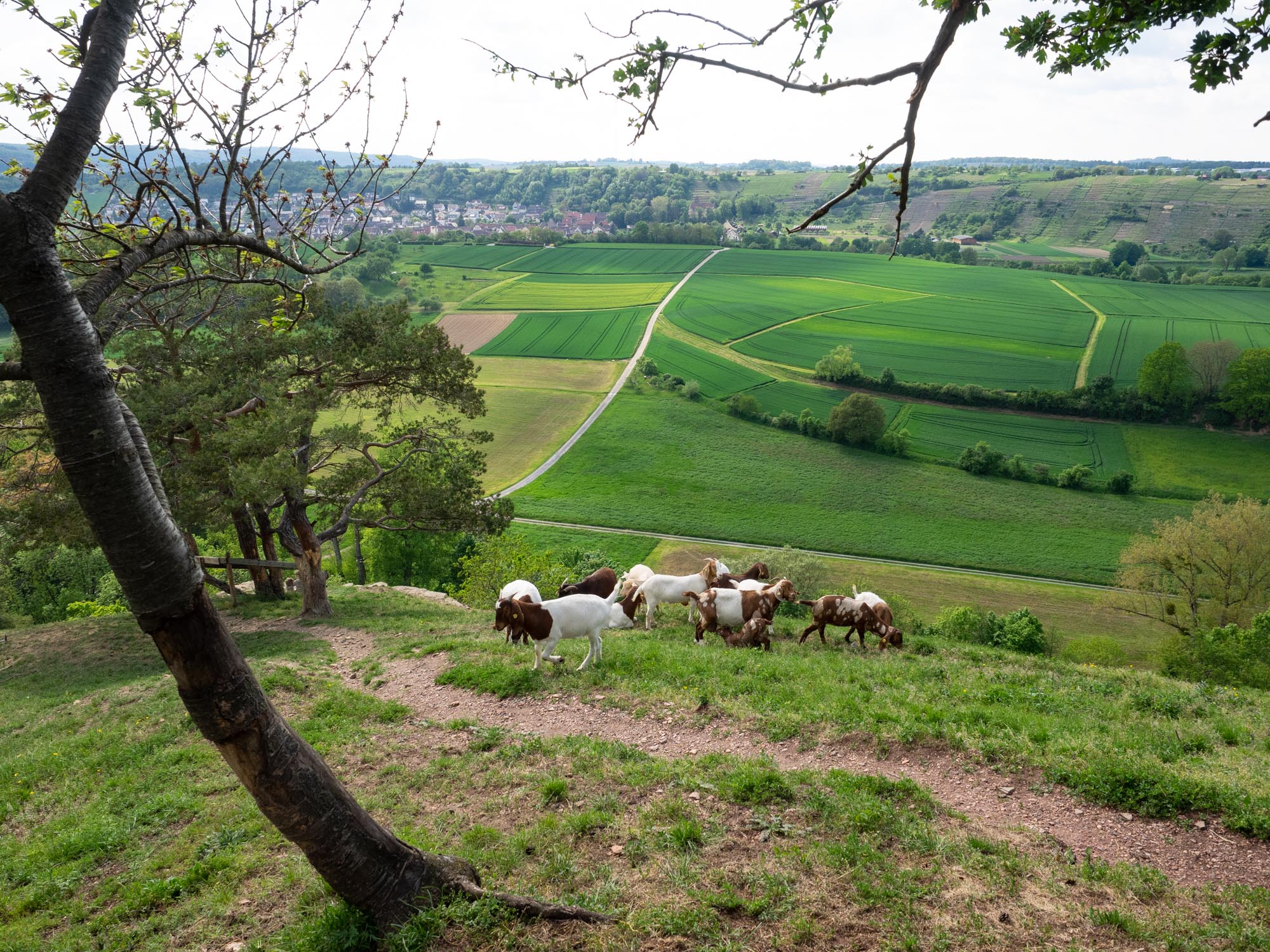
A visit to the university town of Tübingen, in the heart of Swabia, is an almost compulsory part of any trip I make to Europe.
(19th - 23rd May, 2019)
I lived in Tübingen between 1978-1982 and I often seek to catch up with old friends who are still in the area.
Two of those friends, Heinz and Anne, recently visited us in Australia. Like us, they are keen naturalists (actually über keen!). We spent four wonderful days with them exploring German Nature after leaving Neidenstein.
Heinz and Anne kindly offered to pick us up from Sarah and Michael’s place. They took us on a backroads route on the drive to Tübingen, passing through some picturesque countryside and small towns. Heinz has an encyclopaedic knowledge of the history of Swabia. He took us on a fascinating nature/history/culture tour.
Maulbronn monastery
Our first stop was at a UNESCO World Heritage site - the former Cistercian monastery Maulbronn. This impressive complex of buildings has its origins in the early 12th century. It is considered the best preserved medieval monastery north of the Alps.
Here is a collection of photos we took during the two hours we spent at the monastery. We found Nature there too!
The River Enz
After leaving Maulbronn, we dropped in on some friends of Heinz and Anne to enjoy a glass of German wine. It was a wonderful experience sharing time with a group of committed naturalists. Eight Swabians sitting around a table debating the identity of a flower someone had on their phone. Our kind of crazies!
These folk live in a nice part of the world - close to the River Enz. We took in the view of the Enz valley from a spot where the river does a sharp U-turn. The greens of the German countryside at this time of the year are intense.
Kepler’s Home Town
Next stop was in a small town called Weil der Stadt. I’d never heard of it but I should have - it is the birthplace of Johannes Kepler. He was the dude who elucidated the laws of planetary motion. Interestingly, he was also a leading astrologist. There was no real distinction between astrology and astronomy at the time he lived.
These photos show a statue in the town square erected in his honour and some other bloke standing in front of the town hall - nice outfit!
Tübingen
During our time in Tübingen, we stayed with Heinz and Anne. They live in a lovely old house in a suburb of Tübingen called Lustnau. They have a wonderful garden full of local plants and some special exotic species - looks entirely natural but was actually created with a lot of forethought.
Here are some insects we found in their garden.
Hirschau Baggersee
Heinz and Anne had planned a full schedule for our Tübingen visit. The morning after we arrived we visited a nature reserve close to Hirschau, a small village just a couple of kilometres to the west of Tübingen.
The separation between Nature and Industry is often quite blurred in Germany - it’s a crowded land. In this case, the Hirschau Nature Reserve surrounds a lake which is actually a quarry for sand and gravel. The german word for excavator is Bagger, so this is a Baggersee (‘See’ meaning ‘lake’ in German).
Excavation is still underway at one end of the lake, but this hasn’t prevented it being used by a host of waterbirds for nesting and feeding. Martins and swallows nest in the banks of the lake. Woodpeckers, nightingales, kestrels and quail are just some of the many bird species found in the forest and fields surrounding the lake. Heinz told us that birders come from near and far to see rare birds at this site.
Here are some of the images we took of birds, bugs and nature in general during our walk in the Hirschau Nature Reserve.
Paleontological Museum, Tübingen
The rain started to set in after lunch so Heinz chose an indoor activity - a tour of the Paleontological Museum in the Geological Institute, Tübingen University.
The museum houses a very special collection of fossils, many of which were found nearby in the Schwäbische Alb (Swabian Alps). This 220km long, 40-70km wide mountain range rises to just over 1,000m and takes the form of a high plateau.
The Schwäbische Alb is comprised mainly of fossil-rich limestone, formed during the Jura period, 200-180 million years ago, when a huge sea covered this part of Europe.
Here is a small selection of the many fossils on show in the museum.
Dinner with old friends
We took the opportunity to catch up with some other German friends after our first full day in Tübingen.
Eveline Seifert, who was my technician when I worked in the Max Planck Institute in Tübingen joined us for dinner at a local Italian restaurant. Thomas Lambeck and his partner Gabriele also came along. Thomas was my closest friend during my Tübingen time.
Kerri and I have been delighted to host all of these old friends - Eveline, Thomas, Gabriele, Heinz and Anne - at our place in Wonboyn in the last year or so.
Last day in Tübingen - Spitzberg
Our final day in Tübingen was another full one. In the morning we returned to Hirschau - not to the Baggersee but to a steep slope above the village itself.
This area called Spitzberg, extends as a long, steep-sided ridge almost all the way back to Tübingen. You can see it as a green wedge, labeled Hirschauer Berg, in the map above. Vines were grown on the terraced slopes up to a couple of hundred years ago.
Nature returned to the area when viticulture was abandoned and Spitzberg is now actively maintained as a Nature Reserve. It houses an abundance of bird, insect and plant species, most notably a wide variety of native orchids.
We were fortunate to see many of the latter in bloom on our visit.
Here is a selection of photos we took on that morning on the Spitzberg.
Schwäbische Alb tour
After lunch back at Heinz and Anne’s, it was back into the field for more adventures - this time on the Schwäbische Alb. We drove straight up to one of the high points on the Alb near Tübingen - a peak called Roßberg.
There is a Nature Reserve nearby, which we explored for an hour or so. The panorama below gives a good impression of this open area of grasslands with scattered bushes, most of which are juniper bushes.
Maintaining this particular ecosystem requires active intervention. Saplings of “invading” pine trees from the nearby forest have to be periodically removed to prevent it turning into forest.
We saw quite a few insects and flowering plants, including a couple of orchids on the grasslands. But it was obvious that Summer was yet to really arrive at these higher altitudes.
We continued our tour with a drive down one of the rivers in the Alb, the Lauter, which flows into the Danube. We started at its source, or rather where the river first appears above ground.
On its initial stretch, for several kilometres, the Lauter is invisible from the surface, running in a subterranean channel it has cut through the soft limestone over many thousands of years.
It emerges at the spot shown in the photos below in a small town called Marbach. This is the site of an old nunnery, which has been turned into a horse breeding stud. Not entirely appropriate, I would have thought.
The map below shows the site of the Lauter source.
We drove down the road following the river, which takes a sinuous course as the land gradually drops away. Remember that the Schwäbische Alb is a high plateau, so it’s gently undulating at the top. It’s also a very picturesque landscape.
We eventually turned away from the Lauter River and headed for another special spot - the Wimsener Höhle or Wimsen’s Cave. This is the only cave in Germany that can be visited by boat. It’s a short trip - only 70m - but quite spectacular nonetheless.
Here are some shots I took during the boat trip.
There is an historic inn alongside the cave, where we had lunch. Guess what I had?
One of the main reasons they brought us to this spot was to sight the White-throated Dipper, a very neat little bird. It feeds in part by crawling along the bottom of fast flowing streams, searching for aquatic insect larvae, such as mayflies. It is also adept at catching adult mayflies, many of which could be seen flying around the river.
A pair of these birds was nesting in the cave. It was brilliant to watch them flying into the narrow cave entrance with a beakfull of mayflies to feed their young, then come zooming out again to search for more food.
River Danube
Our downhill route finally brought us to the famous River Danube. We did a walk along a forest path that first flanks the main river, then follows a short tributary which is fed by a series of underground springs.
We finished our tour of the Schwäbische Alb with a beer at a pub at Zweifalten on the River Danube. It was here that we finally sighted a bird we had hoped to tick off - a White Stork, which was doing its stereotypical thing by nesting atop a church tower.











